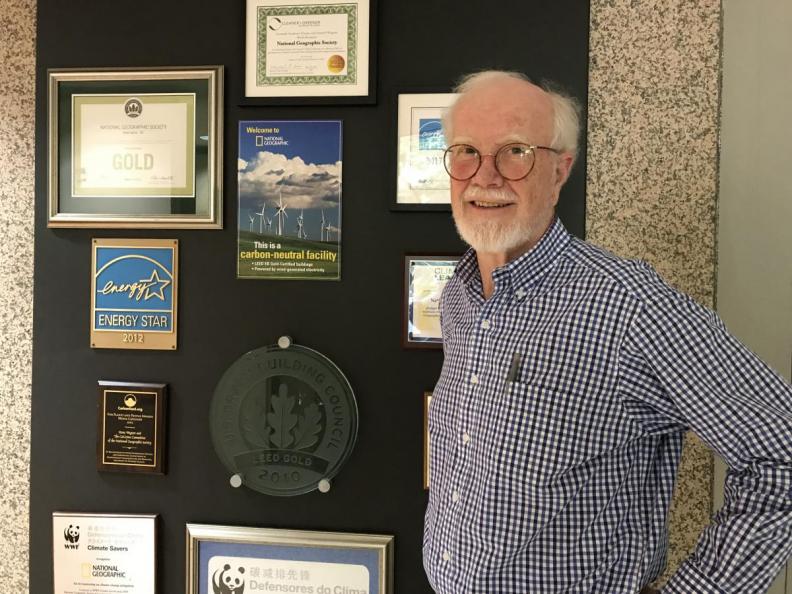
While National Geographic magazine is renowned for its respect of world cultures and ecosystems, Hans Wegner ’70 spent his career ensuring that the company’s operations were also gentle on the planet.
Under Wegner, who retired in 2014 as the National Geographic Society’s first chief sustainability officer, the magazine was the first to achieve carbon neutrality at its building, the first to take a carbon footprint of all its products, and the first to join the Sustainable Forestry Initiative, ensuring responsible management of forests and actively promoting reforestation.
Wegner says once he created a sustainability initiative, getting his colleagues onboard was easy.
“Everyone feels badly about environmental degradation and climate change, and they want to be a part of the solution. I showed them how we could do it, and they felt good about it.”
Originally from the countryside of Paraguay, Wegner says, “I’ve always been an environmentalist. Where I grew up, it was beautiful and undisturbed.” When he was a teenager, he and his family immigrated to the United States. Wegner says he noticed a big difference in how the environment was treated. “I became increasingly aware of the fact that people were living unsustainably, and so my inclination was simply to say, ‘What can I do to make a difference?’”
He started as a photographic lab worker at the National Geographic Society in 1973, eventually working his way up to vice president of production services. In this capacity, Wegner saw his opportunity. He oversaw magazine printing and production, and took the initiative to mandate more sustainable practices by the Society’s suppliers.
“I was very concerned about making sure that our suppliers, printers and paper manufacturers were as efficiently run as they could be—that any airborne or waterborne emissions and the disposal of toxins would have to be managed responsibly,” he says. “I just made it my business to talk to people and say: ‘You can’t do business with National Geographic unless you use the best practices available.’”
National Geographic published its first comprehensive issue about climate change in 2004, sharing jarring evidence about the rising amount of carbon in the atmosphere and how that correlates to climate change and destructive changes for ecosystems and human society.
Wegner says it sparked a personal resolution to do even more.
“I was frustrated by the fact that people were doing this harm to the planet but we weren’t behaving differently,” he says. “At National Geographic, we were content that we’d done our job just because we published this issue about climate change. But really our job had just begun and we needed to act.”
Wegner took his goal of reducing the impact that National Geographic operations had on climate change and formed an employee committee, which he led until his retirement.
“We needed to know the size of the problem that we were creating and we needed to take ownership of it,” he says.
Wegner says calculating the company’s carbon footprint helped to reveal the company’s progress in decreasing emissions. “People find it empowering to have this kind of a tool. Now we can see the impact we have and how much of this decline we can contribute to actions we’ve taken.”
Wegner spent 41 years at National Geographic working to incorporate the best environmental practices into the company, and he hopes his pioneering work in company’s operations inspires others.
“I see a lot of businesses waiting for government guidance, and I see very few businesses taking control of what they do and trying to make a difference,” he says. “Businesses and workers need to look in the mirror and say, ‘What is it that I can do?’”
This story was featured in the 2018 SustainableUMD Magazine.